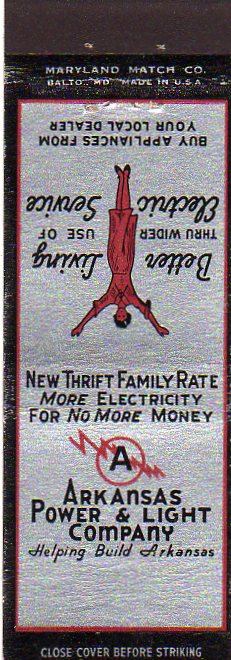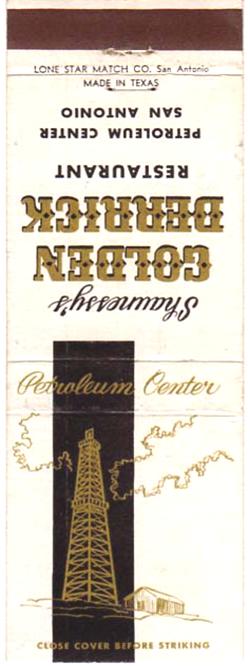- Strikers are essential
in collecting. Not only are they required for the matches to
actually work, but the condition of the striker is the primary
factor in determining whether or not the matchcover is collectible.
If the striker has been used, the cover isn't collectible to
most collectors (although many collectors will use such as place
holders in their albums until an unused version of the cover
can be found.) In fact, some early collectors in the 1930s used
to cut the strikers off their covers, ruining them forever (by
today's hobby standards, at least).
-
- Strikers can be found
in a number of different positions on the matchcover. The very
first matchbook (1894) had the striker inside the matchbook.
When Diamond bought the rights to the invention, the striker
was immediately moved to the outside. Almost all matchbooks thereafter
had the striker on the outside front...until 1973. It
was then that the government mandated that the striker be moved
to the outside back. Manufacturers were allaowed to use
up their existing stock, though, so that last of the older versions
were issued through 1978.
-
- But, the striker has been
in other positions, as well. An early Diamond type featured the
striker at the bottom of the folded matchbook. This base-friction
type didn't last very long.
-
- On the Odd Striker version,
the striker is integrated into the advertiser's design on the
cover. It can appear anywhere on the front or back panels and
in any shape. The most famous issue of this type was the World
War II Patriatic cover where the striker made up the seat of
Hitler's pants! And in error covers, the striker is frequently
to be seen...back on the inside!
-
- The size of the striker
has also changed over the years. Early on, the striker material
was hand-applied, leading to slanted and uneven strikers. During
this period, Diamond also was applying the striker material over
the staple, making it very difficult for collectors to remove
the staple without digging holes in the striker. Later, machine-applied
strikers resulted in even, standardized strikers. Also, in the
beginning, compared to today, strikers were noticeably larger
('wide-strikers'; normally 7-9 mm). This was standard until the
latter 1930s, when vending machines became common. The then standard
matchbook was too large to fit vending machines, so the length
of the cover was shortened...and the size of the striker with
it. Hence, the standard striker today is 4-5mm.
-
- 99.999% of matchbooks
have always had the striker glued or otherwise chemically 'adhesived'
to the cover, but the Owname Renewable Matchbook Co. (1925-1940s)
tried holding the striker to the cover with just the staple.
Probably a cost-saving measure, but it never caught on.
-
- The actual make-up of
the striker has always been pretty much the same abrasive material,
but foreign issues sometimes use a variety of other materials,
some of which look like coarse sandpaper.
-

|

|
 |
|
Wide Striker |
Modern Striker |
Bottom Striker |
 |
 |
|
Odd-Striker |
Base Frictiuon |
|

